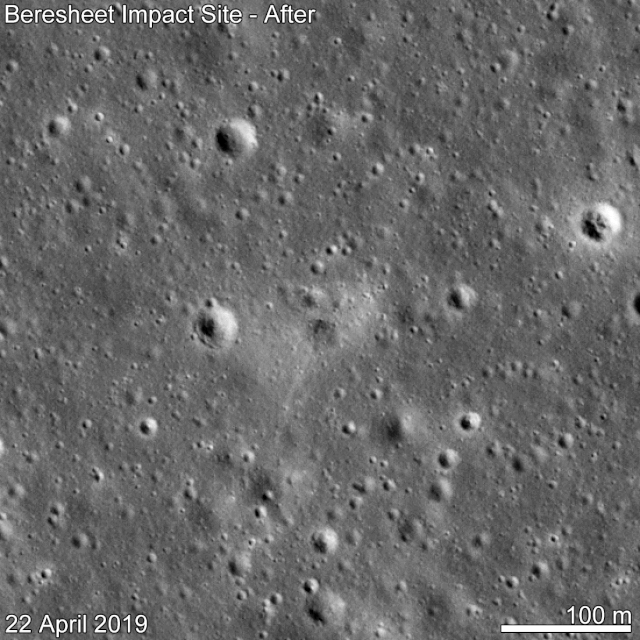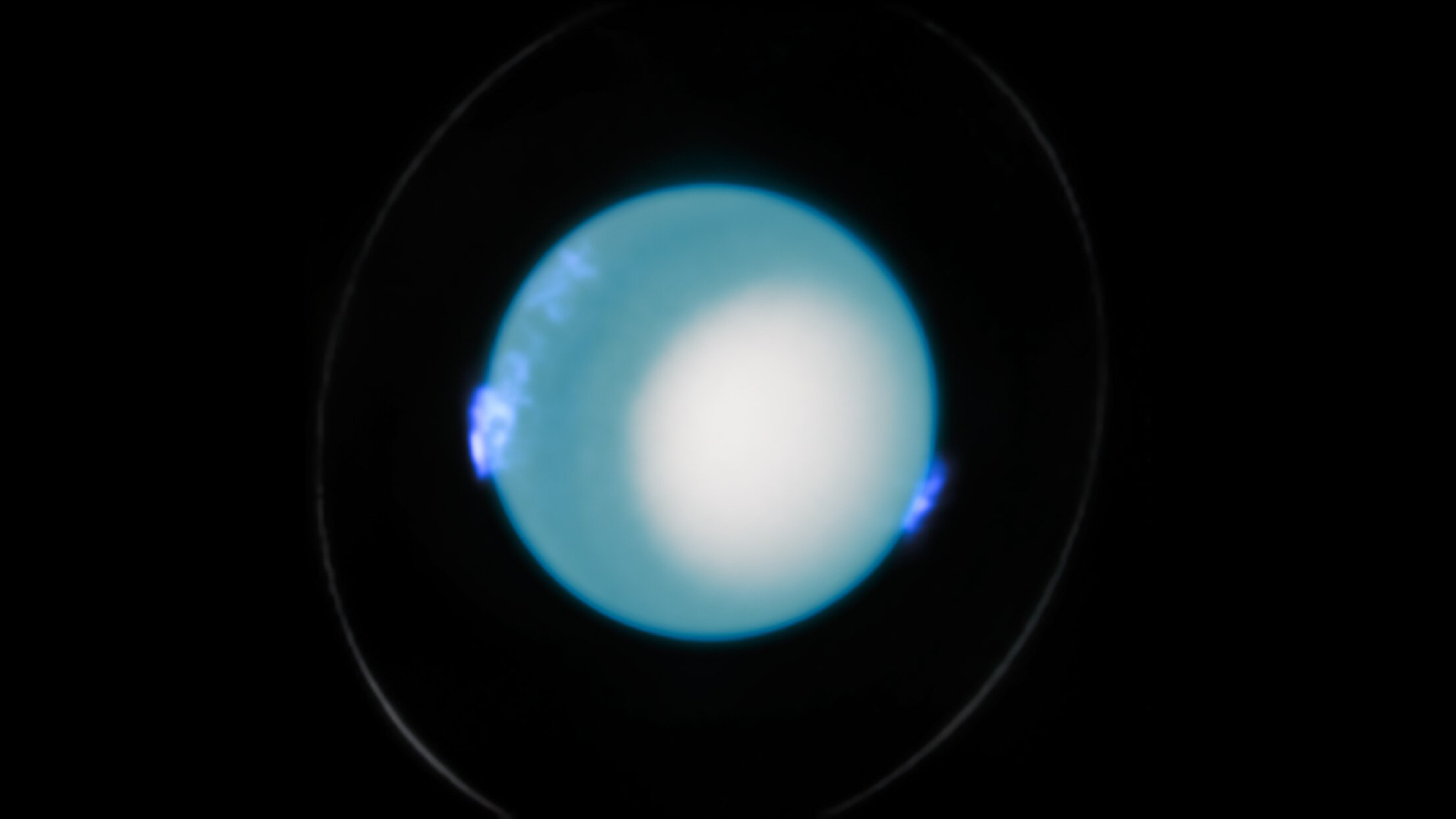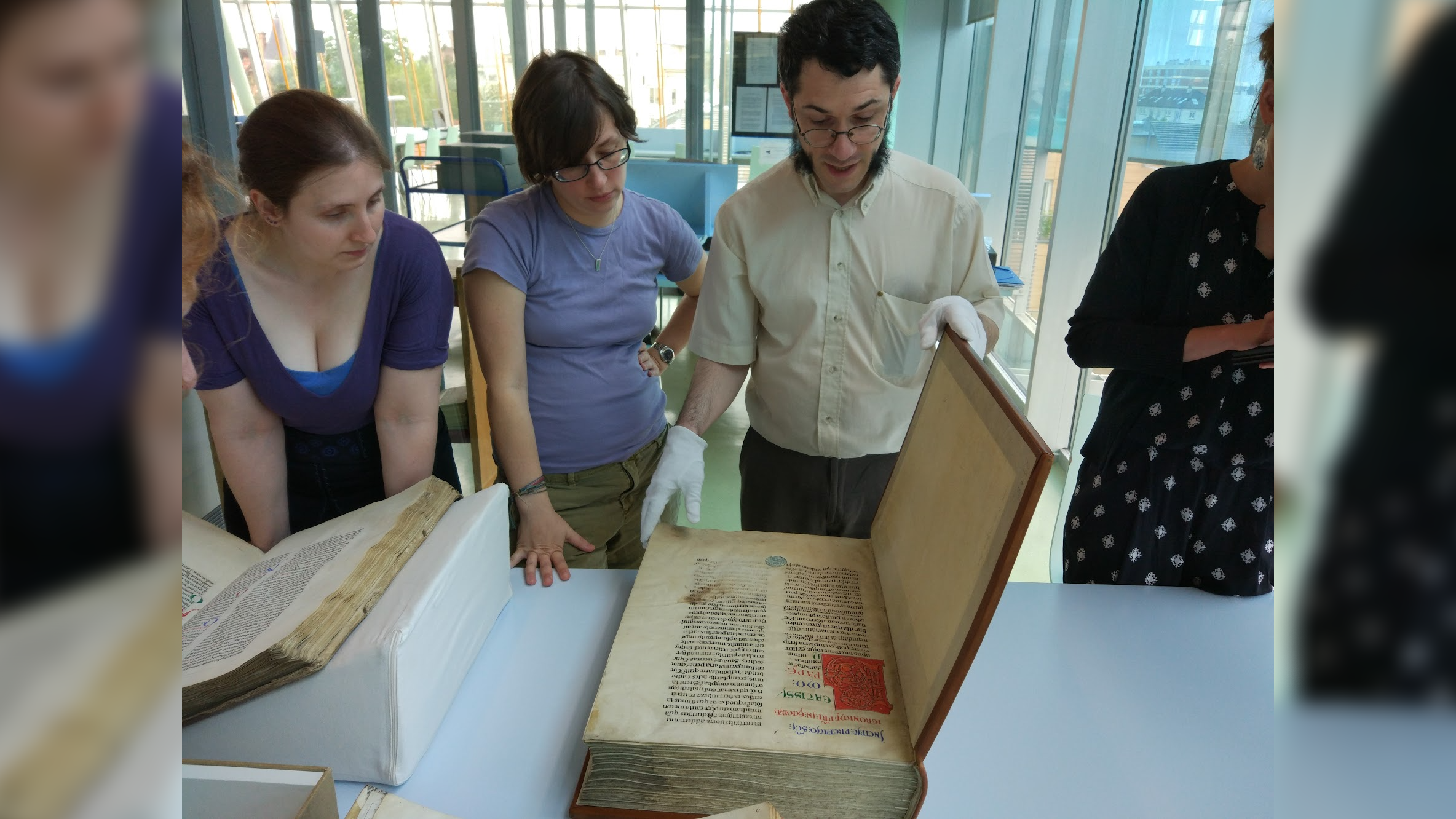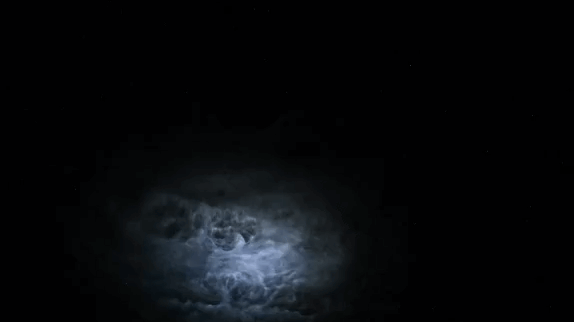Grave of Israeli Lunar Lander Spotted by NASA Spacecraft

A sharp-eyed NASA spacecraft spotted the probable remains of an Israeli spacecraft that crash-landed on the moon last month.
New lunar images show what appears to be the final resting place of the Beresheet lander, a spacecraft managed by nonprofit organization SpaceIL.
Beresheet's impact site appears as a "white impact halo" in the new image from the Lunar Reconnaissance Orbiter (LRO), NASA officials said in a statement. A white tail is also clearly visible in the image, which NASA said is consistent with Beresheet's trajectory and approach angle as the spacecraft came down April 11.
Related: This Is the Last Photo Israel's Beresheet Moon Lander Ever Took
"The cameras captured a dark smudge, about 10 meters [32 feet] wide, that indicates the point of impact. The dark tone suggests a surface roughened by the hard landing, which is less reflective than a clean, smooth surface," NASA officials said.
"The light halo around the smudge could have formed from gas associated with the impact or from fine soil particles blown outward during Beresheet's descent, which smoothed out the soil around the landing site, making it highly reflective," the agency added.
Related: The Greatest Moon Crashes of All Time
Sign up for the Live Science daily newsletter now
Get the world’s most fascinating discoveries delivered straight to your inbox.
The mission of Beresheet, the first private lunar lander, came to a sudden end on April 11 during its descent to the lunar surface. LRO's orbit first brought that spacecraft over the impact site on April 22, and the orbiter captured the image using its black-and-white, narrow-angle cameras.
LRO flew over the site at an altitude of about 56 miles (90 kilometers). From that distance, the spacecraft could not detect any crater. NASA officials said it's possible the crater was too small for LRO's cameras or that Beresheet created a small indent instead of a crater.
Beresheet hit the surface at a low angle of approach (8.4 degrees relative to the surface) and with a relatively low velocity and light mass compared to a typical meteoroid (space rock) that slams into the moon's surface, NASA officials noted. All of these conditions may have added up to a small indent on the surface.
NASA found the site thanks to radio tracking of Beresheet's descent, which pinpointed the landing site to an uncertainty of only a few miles. Technicians compared new images to 11 "before" images taken of the area and found only one feature that plausibly could have been made by Beresheet. The team also compared the site to craters that were made by other spacecraft that hit the lunar surface, including GRAIL, LADEE and Ranger.
NASA isn't done with its Beresheet observations yet. Small mirrors were mounted on the top of the spacecraft, so the agency is trying to bounce laser pulses from LRO onto the mirrors. It's not clear yet if the retroreflector survived the crash.
- Did NASA Experiment Survive Israeli Moon Lander's Crash?
- Space Is Hard, Beresheet Israeli Lunar Crash Proves Again
- Manual Command Likely Caused Israeli Moon Lander's Crash
Follow Elizabeth Howell on Twitter @howellspace. Follow us on Twitter @Spacedotcom and on Facebook.

Elizabeth Howell was staff reporter at Space.com between 2022 and 2024 and a regular contributor to Live Science and Space.com between 2012 and 2022. Elizabeth's reporting includes multiple exclusives with the White House, speaking several times with the International Space Station, witnessing five human spaceflight launches on two continents, flying parabolic, working inside a spacesuit, and participating in a simulated Mars mission. Her latest book, "Why Am I Taller?" (ECW Press, 2022) is co-written with astronaut Dave Williams.










